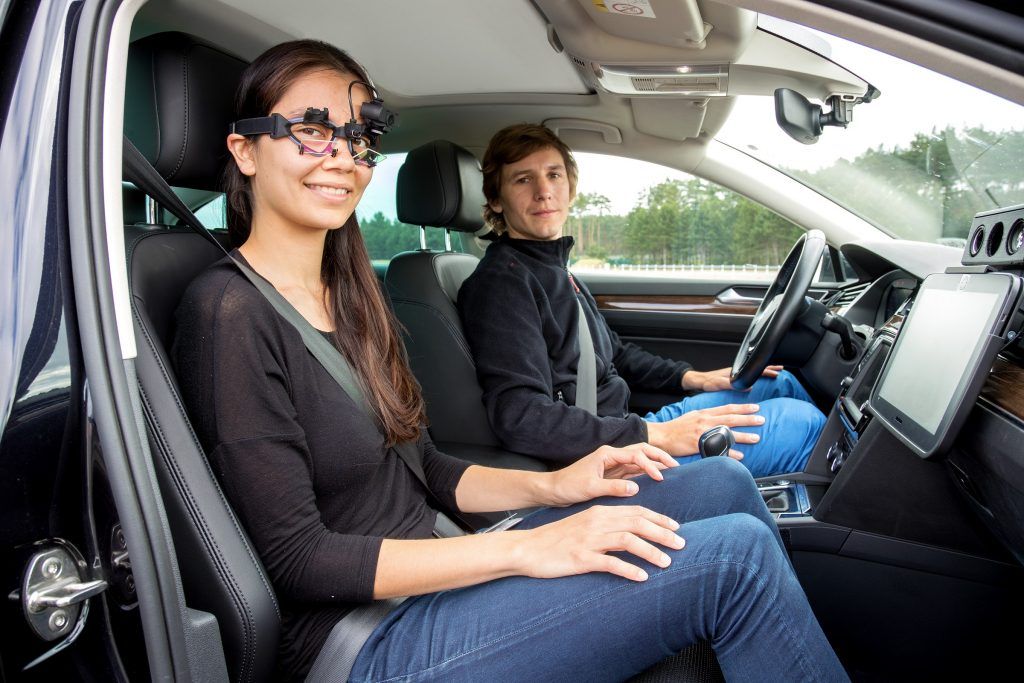Volkswagen is trying to solve the problem of motion sickness in autonomous cars.
We’ve all been there. Usually not when we’re driving the car, but sometimes when you’re riding shotgun on a bumpy road you get that sinking feeling in your stomach. More often it happens while you’re just trying to read a book or respond to that text message on your phone, and then it’s suddenly time for puke city.
The problem is especially pervasive in autonomous vehicles. Car sickness (or any motion sickness, really) happens when there’s a disconnect between what your eyes see and what your body feels. When you’re driving, this often doesn’t happen since your eyes are seeing what’s out there and since you’re in control of the vehicle you generally know what’s going to happen so your body can automatically adjust.
But when inside a car that drives itself, you don’t have that same forewarning. Things get even worse if you decide to let the car really drive itself so you can look at something else, like a movie or TV show (not that there are any cars that can let the driver do this quite yet).
“To put it simply, the forces acting on us in the car confuse our sense of perception,” says Adrian Brietzke of Volkswagen Group Research. Located in Wolfsburg, Germany, Adrian and other scientists at Volkswagen are trying to overcome the problem of motion sickness, and they’ve got some pretty neat technology already working on it.
First, they need some baseline data, and that involves a female volunteer strapped with a whole bunch of cameras and sensors that measure her pulse, skin temperature, and even changes in skin tone. She then gets in the passenger seat of an Audi A4 test vehicle that follows behind a semi-autonomous Passat in automatic cruise control while the Passat travels in a “start-stop motion.”
Inside the A4, the passenger seat has a tablet where the guinea-pig--er, that is, volunteer rates her current queasiness while looking at a school of virtual fish (which are innocuous so as not to skew the test data).
It doesn’t take long for the volunteer to feel sick.
While VW has a lot of data, they don’t have a lot of solutions. Currently, the leading candidates are seats with motion damping technology that automatically react to the vehicle's actions, as well as LEDs on the doors that light up green during acceleration and red during braking. This only handles longitudinal motion, however, and VW doesn’t have much for if the car takes a 90-degree turn a little too fast.
(via Car and Driver)


